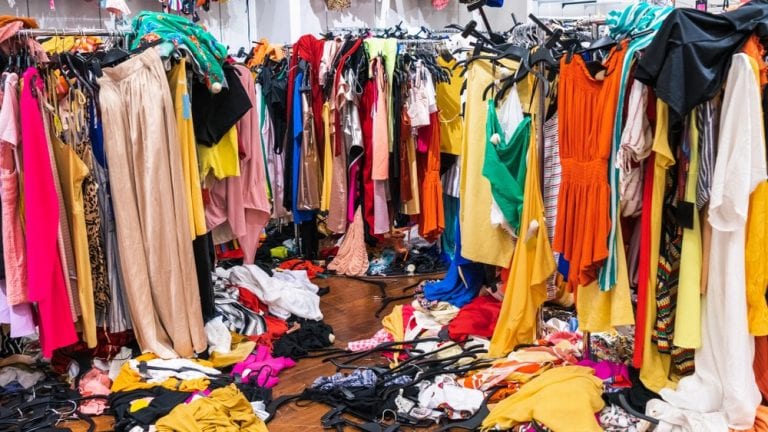Author: Raquel Pascual from papernest
Fast fashion refers to companies that aim to produce as many collections as possible each year. This is possible thanks to the great demand for clothing by consumers.
In addition, what allows these companies to offer very attractive prices is the poor quality of the products. For example, the fabrics used are usually of very poor quality, the production method is industrial, and labor is cheap.

Fast fashion players offer clothing at very low prices so that it is accessible to the greatest number of people and therefore sells to the greatest number of people. Fast fashion is based on the ephemeral aspect of fashion.
What is the level of production of fast fashion?
Fast fashion mass-produces to meet the growing demand . However, this is done at the cost of the working conditions of the employees. In fact, most of the clothing is made in Bangladesh or Pakistan, that is, where labor is cheaper.
This is the list of countries where most of the clothing is designed:
- bangladesh
- Pakistan
- thailand
- Türkiye
- India
- Vietnam
- Indonesia
- China
- Tunisia
- Morocco
It is in these countries where fast fashion actors decide to design their garments. This is mainly because labor in these countries is very cheap.

On average, fast fashion consumers only wear their clothes 4 times. 60% say that they no longer like it afterwards and the remaining 40% think that it is no longer fashionable.
Thus, we see that fast fashion values the ephemeral aspect of fashion by offering a multitude of collections so that the consumer gets tired of their clothes as soon as possible.
What are the consumption habits that are linked to fast fashion?
It is also important to note that fast fashion is also encouraged by a large section of consumers. It is interesting to see that the budget that goes into fashion has been steadily decreasing over the last 10 years. Fashion has become almost a product like any other.
It is also important to note that the world as a whole wears much more clothing than it did 20 years ago. It is estimated that the world uses about 80 million articles of clothing a year . This represents a 400% increase over two decades ago.
This change in consumption patterns is more visible in developed countries, while fast fashion is gradually arriving in developing countries.
For developing countries it is difficult to give up fast fashion because it is an important source of income. In addition, it is difficult for them to give up in the sense that developed countries have also benefited from fast fashion to develop.
What resources does fast fashion use?
It is important to know that fast fashion uses a significant number of the resources available on the planet.
For example, fast fashion companies use an enormous amount of water to design their garments. Up to 4% of the world's available drinking water is used to produce fast fashion clothing.
According to various experts, 20% of the world's industrial water pollution is due to the processing and dyeing of textiles. This makes the fashion industry one of the most polluting for water.
Finally, the fashion industry is also one of the industries that consumes the most electricity in the world.
What are the harmful effects of fast fashion on the environment?
The fashion industry is being heavily criticized by environmental activists due to its numerous harmful effects on the environment. Environmental activists point to several things.
Whether it is the transportation of the clothes, the working conditions or the pollution caused by mass production, these are things that are highly criticized today.
The fashion industry is now the second most polluting industry after oil . This is mainly due to the use of pesticides, formaldehyde and carcinogenic substances in the fabrics used to make the garments worn by fast fashion consumers.
What is the harm of fast fashion in the water?
As we have seen above, the fashion industry consumes a lot of water, but it also pollutes drinking water a lot.
It also reinforces the feeling of inequality of underdeveloped countries with respect to developed ones. In fact, this pollution is generated by the most developed countries, but the poorest are the ones who pay the consequences.
The World Bank estimates that by 2050, up to 143 million climate migrants could reach Western countries. The UN is much less optimistic and estimates that some 1,000 million people could reach Western countries in the same period.
If you want to know more about the subject, we invite you to read this article .
Thanks to Compañías de Luz for sharing this information and your article
If you want to see the complete article, we invite you to click here



